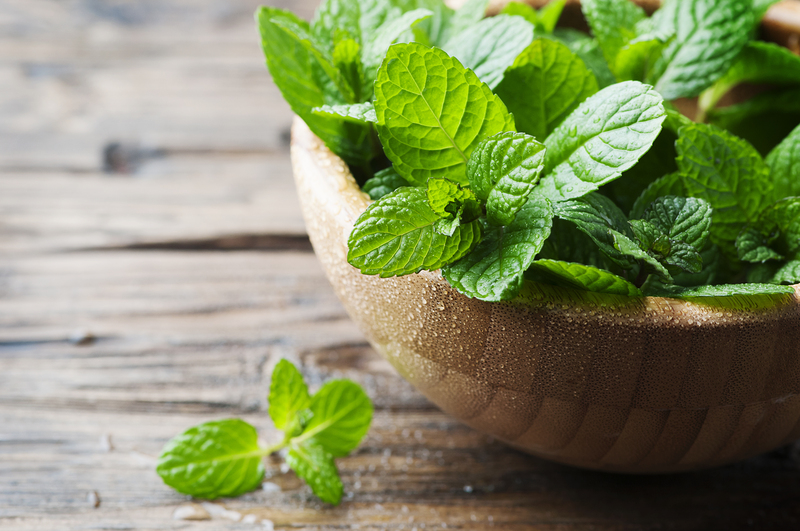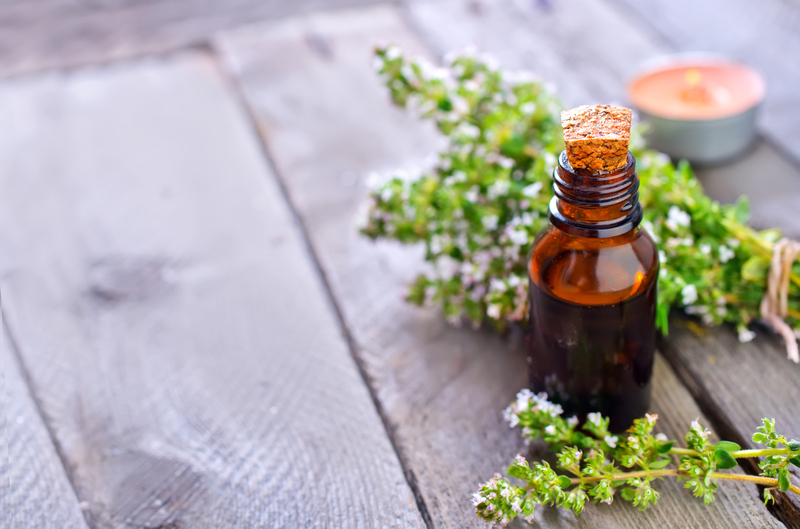Expert Advice on Maintaining a Mold-Free Bathroom
Posted on 30/08/2025
Expert Advice on Maintaining a Mold-Free Bathroom
A bathroom is supposed to be a haven for relaxation and cleanliness, but it can rapidly become a breeding ground for mold if not properly cared for. Mold not only presents unsightly stains and odors but also poses potential health risks, especially to people with allergies or respiratory conditions. To help you create a safer, healthier, and more pleasant environment, this article compiles expert advice on maintaining a mold-free bathroom.

Understanding Mold: Why Bathrooms Are Vulnerable
Mold thrives in warm, moist environments, and unfortunately, bathrooms are the perfect habitat. The frequent use of hot water for showers and baths raises humidity levels and creates condensation, providing the ideal conditions for mold to flourish. Mold spores spread rapidly across walls, ceilings, tiles, and even inside cabinets or under flooring if not addressed promptly.
Health Risks Associated with Bathroom Mold
- Allergies: Mold spores can trigger sneezing, runny nose, skin rashes, or eye irritation.
- Asthma: Individuals with asthma may experience frequent attacks or worsened symptoms.
- Respiratory Infections: Prolonged exposure could lead to more severe health problems, including respiratory infections.
Given these risks, it's vital to implement mold prevention strategies in the bathroom to protect your family and home.
Key Strategies to Ensure a Mold-Free Bathroom
1. Optimize Bathroom Ventilation
- Use an Exhaust Fan: Install a high-quality exhaust fan and run it during and after showers or baths for at least 20-30 minutes. This helps to expel humid air and reduce moisture accumulation.
- Open Windows: When possible, open windows to increase airflow and aid drying of wet surfaces.
- Keep Doors Open: Leave the bathroom door open after use to encourage air exchange with the rest of your home.
Expert tip: Clean your exhaust fan regularly and ensure it is vented outdoors, not into your attic or a crawl space.
2. Control Moisture and Humidity Levels
- Fix Leaks Promptly: Address any leaks in plumbing, toilets, or sinks immediately to prevent hidden water damage.
- Dry Wet Areas: After bathing or showering, dry off tiles, walls, floors, and shower doors with a squeegee or towel to limit moisture.
- Dehumidifiers: Consider using a portable dehumidifier in bathrooms with persistent humidity issues, especially in windowless or basement bathrooms.
Target optimal humidity levels (ideally between 30-50%) to inhibit mold growth.
3. Select Mold-Resistant Materials and Finishes
- Mold-Resistant Paint: When repainting, choose products specifically labeled as mold- or mildew-resistant.
- Mold-Resistant Drywall: Especially in remodeling projects, install "green board" or other mold-inhibiting drywall products.
- Shower Curtains and Liners: Pick materials like nylon or polyester, which resist moisture and dry quickly.
- Grout and Caulking: Use mold-resistant grout and caulk, and inspect them regularly for cracks or gaps that trap moisture.
4. Routine Bathroom Cleaning
- Frequent Scrubbing: Clean tiles, tubs, sinks, and shower doors at least once a week with non-abrasive mold-killing cleaners.
- Pay Attention to Corners: Mold often starts in grout lines, caulk corners, or behind fixtures, so target these areas diligently.
- Wash Bathroom Textiles: Launder bath mats, towels, and shower curtains weekly in hot water and dry them thoroughly.
Pro tip: Use a diluted vinegar solution or hydrogen peroxide for natural, chemical-free mold removal.
Proactive Measures: Preventing Mold Before It Starts
Smart Organization and Storage
- Avoid Clutter: Keep countertops clear and minimize excess items, which limit airflow and can trap moisture.
- Raise Items Off the Ground: Store bathroom essentials on shelves or in cabinets, not directly on damp floors.
- Ventilate Cabinets and Vanities: Occasionally leave cabinet doors open or use vented cabinetry to allow moisture to evaporate.
Strategic Placement of Mats and Rugs
- Choose Quick-Dry Materials: Select bath mats made of quick-drying microfiber or rubber, avoiding materials that retain dampness.
- Launder Regularly: Wash and thoroughly dry mats every few days to discourage mold and bacterial buildup.
Regular Inspections
- Check for Early Signs: Look for discoloration, musty odors, or warped surfaces, which may indicate hidden mold.
- Inspect Hidden Spots: Don't forget to check behind mirrors, under sinks, and beneath bathroom rugs.
What to Do If You Find Mold in Your Bathroom
Immediate Response for Small Outbreaks
- Clean and Disinfect: For minor mold stains (typically less than 10 square feet), scrub the surface with a mixture of water and detergent, then apply a mold disinfectant like diluted vinegar, hydrogen peroxide, or a commercial mold-remover.
- Dry Completely: After cleaning, ensure the area dries thoroughly to prevent mold recurrence.
When to Call a Professional
- Large Infestations: If the affected area is larger than 10 square feet, or if mold returns after cleaning, contact a licensed mold remediation specialist.
- Unidentifiable Source: If leaks or excessive humidity are suspected but not easily found, a professional can conduct a thorough inspection and use moisture meters or thermal imaging.
Long-Term Strategies for a Mold-Free Bathroom
Regular Maintenance Schedule
Commit to the following preventive routines:
- Weekly: Deep-clean showers, tubs, sinks, tiles, and grout.
- Monthly: Inspect and clean exhaust fans; check pipes for leaks.
- Seasonally: Refresh caulking and grout, run dehumidifiers more frequently in humid months.
Upgrade Fixtures for Mold Prevention
- Touchless Faucets: Reduce water splashing and dripping with motion-activated faucets.
- Wall-Mounted Toilets and Sinks: These styles facilitate easier floor cleaning and eliminate damp crevices at the floor junction.
- Heated Towel Racks: An added feature that helps towels dry faster, reducing persistent dampness.

Frequently Asked Questions on Mold-Free Bathroom Maintenance
What is the best way to clean and prevent mold on shower tiles?
Scrub the tiles and grout weekly with a mold-killing solution such as vinegar or a mild bleach solution (never mix bleach with ammonia or other cleansers). Squeegee excess water off tiles after showering, and run the bathroom fan to dry surfaces quickly.
Is bleach effective for bathroom mold removal?
Bleach can kill surface mold and help with discoloration on non-porous surfaces like tile and glass. However, it's less effective on porous materials such as drywall, where mold roots may remain. For ongoing mold prevention in bathrooms, use bleach sparingly and consider less harsh options for routine cleaning.
What should I do if there's a musty smell in my bathroom, but I can't see any mold?
Musty odors suggest hidden mold growth. Investigate under sinks, behind walls, or under flooring for leaks or moisture damage. If you can't locate the source, consider hiring a professional for a thorough assessment.
Can houseplants help with moisture control in the bathroom?
Certain houseplants can absorb humidity, but their effect is limited in a damp bathroom environment. Instead, prioritize mechanical ventilation and moisture control. Remember, potted plants themselves can harbor mold in their soil.
Summary: A Mold-Free Bathroom Is Possible With the Right Approach
Maintaining a clean, healthy, mold-free bathroom comes down to a combination of vigilant cleaning, smart design choices, and attention to moisture management. Implementing the expert tips for mold prevention in the bathroom outlined in this guide will help you create a space that's safe and comfortable for everyone in your home.
- Ensure proper ventilation and air circulation at all times
- Dry wet surfaces immediately and repair any leaks fast
- Adopt a stringent cleaning routine targeting mold-prone areas
- Regularly upgrade and maintain fixtures and finishes for optimal protection
By taking proactive steps today, you can enjoy a fresh, sparkling, and mold-free bathroom for years to come!




